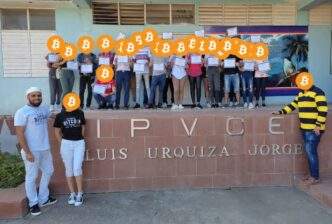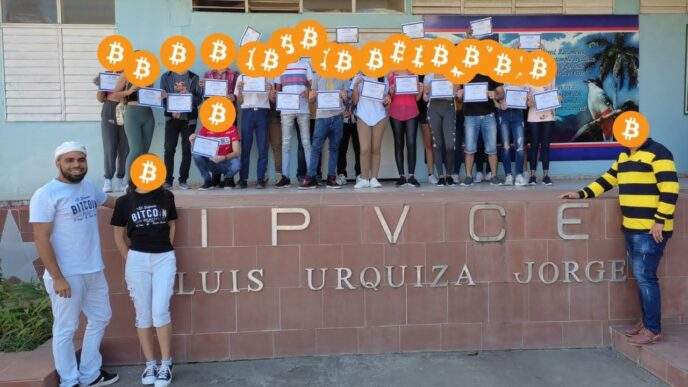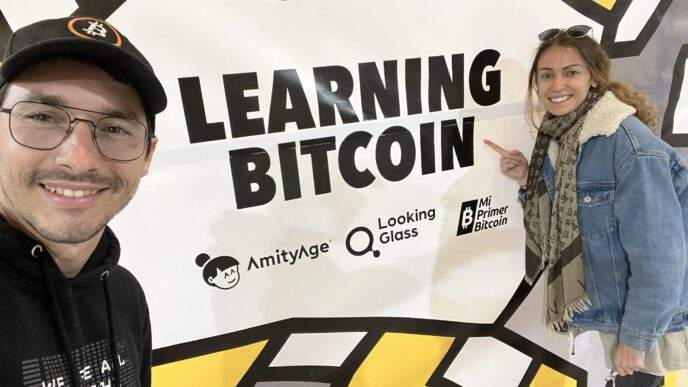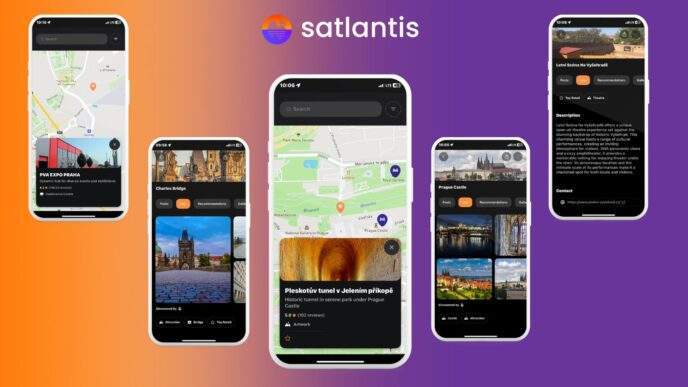When Joao Almeida talks about Lightning, his facial expressions and tone occasionally can resemble that of a parent describing his son pronouncing his first word or his daughter graduating from college. Joao is not the creator of the Lightning Network, but he definitely contributed to its success, building on top of it during every phase of its growth.
The Co-Founder of Opennode and the mind behind Zap (which later evolved into its custodial version Strike), Joao is now shifting his focus beyond payments and the Lightning Network. Instead, he built a simple tech solution that lets businesses automatically convert a portion of their sales into BTC.
Getting into Bitcoin and Lightning
- How did your Bitcoin journey start?
I got into the space with Zap. At the time, it was the only project where you could actually interact with Lightning. Everything else was very theoretical. It was only academic papers—it wasn’t really about applications. That’s why Jack Mallers also became pretty popular with Zap—it was the first thing where you could actually experience Lightning.
Following on that, I created a plugin for e-commerce. 60% of websites on the internet are powered by WordPress—it’s a CMS system. WooCommerce is their e-commerce plugin that you add to WordPress websites. So, back in 2017, I built the first Lightning Network plugin for WooCommerce.
- Wasn’t that right after the Lightning Network whitepaper was proposed?
Yeah, everything was still in beta. But Jack, me, and a few other pioneers were like, “Screw it, we’re going to risk it.” It was risky, but at some time, you have to take risks to get the reward. So I built the plugin, and it went pretty viral on social media.
What started as just an e-commerce plugin turned into something more. The team working on Zap at the time came from different backgrounds, different cities—I’d never met most of them in person. We started to work on some side projects, and eventually, part of that team created what became OpenNode.
I’d say it was the first commercial solution that actually leveraged the Lightning protocol—building on the idea of making tools that allow you to interact with the tech without having to fully understand it. So that first plugin became the foundation for OpenNode.
We started building products—POS systems, donation pages—and figured out how to enter the market. There wasn’t much competition at the time; we were probably the only ones doing it.
- Who were your first customers?
We actually worked with Coin Center. They do great work in Bitcoin policy. Our first demo was a donation-based platform where all proceeds went to Coin Center. It was a way for people to try out the technology while also contributing to something good that supports the ecosystem.
Initially, the e-commerce plugin was our most popular product, and that was by design. We didn’t have any physical POS solution at first. I would say the big breakthrough came with El Salvador, two years in. McDonald’s, Taco Bell, and other multinationals started using our product to accept payments. That’s when we began to grow significantly and gain brand awareness. Our user base became more diverse and mainstream.
We found especially strong product-market fit in high-risk industries—pharmacies, CBD stores, things that are legal and follow all the rules, but are still shut out of the traditional financial system. That’s been changing a bit. Companies like Square are beginning to serve those markets. But smaller shops still don’t have access, and they became our early adopters.
The Current State of Lightning
- Some people today feel Lightning was over-hyped. It was supposed to be the scaling solution, but many now think it hasn’t lived up to that promise. Do you agree?
Yeah, Lightning is definitely a complex protocol. The reason it’s complex is that for it to be truly decentralized, you need unilateral exits. That’s the benchmark. A lot of Layer 2s and other currencies wear “decentralization” as lipstick, but if you can’t exit unilaterally, it’s not truly decentralized.
That complexity introduces trade-offs—liquidity being one of the major ones. That’s probably the biggest barrier to why adoption hasn’t happened faster. But like anything worth building, it takes time to do it right. People were really excited and wanted fast results because Lightning looked like the most promising solution.
But I don’t think the issue is the tech itself. The problem is behavioral. In the U.S., there’s no strong incentive to use bitcoin as a payment method—it’s a taxable event, and people see more upside in holding. So I wouldn’t blame Lightning. It’s more about how people behave.
In emerging markets, the situation is different. That’s why we saw stickier adoption in places like El Salvador—especially for remittances. Because of liquidity limitations, I think Lightning is actually a great upgrade for B2B—say, between exchanges. There’s a degree of trust, but you retain custody and still transact.
So no, I don’t think the limitation is technological. People don’t want to spend bitcoin unless they have to. Even if Lightning worked perfectly tomorrow, we wouldn’t suddenly be on a Bitcoin standard. That’s not how it works.
- So, is Bitcoin still a medium of exchange?
Great question. I think bitcoin is money and a network. It’s proven itself as a store of value. It’s the best-performing asset of the past 16 years. And when it comes to sending wires or cross-border value, bitcoin is still the better alternative.
It might not make sense for everyday coffee purchases yet, but for borderless transactions, it’s still the best option.
So yeah, it’s money. Maybe people haven’t fully realized it yet, but it is better money. That’s on the record—something Michael Saylor would probably be proud of.
Orqestra and Onboarding Small and Medium Businesses
- What are you working on right now?
OpenNode is still operating, but I left the company last year. I left with the same realization I just mentioned: there are only certain industries where bitcoin is a necessity. There’s activity there, but broadly, we’re still early for bitcoin as a true medium of exchange.
That said, it’s important to have the option to spend bitcoin. Projects like OpenNode and BTCPayServer are critical because if bitcoin isn’t transactable, it loses part of its purpose. It just becomes a pet rock.
So my next mission was: how can I help people and businesses accumulate bitcoin more easily? I’ve been working on a bitcoin treasury solution—software that helps small and medium businesses do what big public companies do when they buy bitcoin, but without needing a finance team or issuing debt.
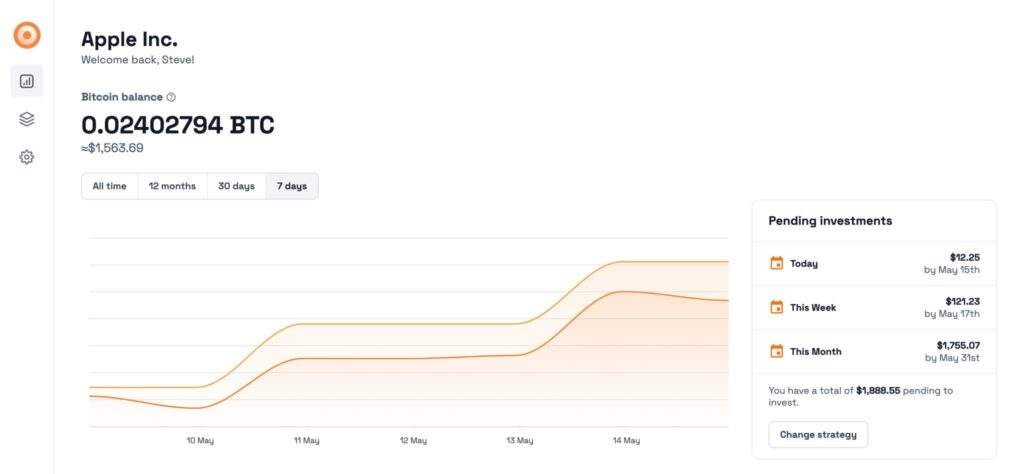
How do you take that to scale? How do we democratize access to that kind of savings vehicle?
The software lets you connect your QuickBooks, Stripe, or Square account and say, “I want 2% of my revenue to go into bitcoin.” You don’t have to think about where to buy or how to custody it—we provide that. The option is there if you want to do it manually, but the platform brings it all together.
- So it’s really a plug-and-play solution for small and medium-sized businesses?
Yes. We’re not trying to orange-pill them or say, “Put 100% of your profits in bitcoin.” But we help them get off zero and choose whatever exposure they’re comfortable with—from 0% to 100%.
Over time, once they’re exposed, they start to see the benefits. A great example is the Tahini’s restaurant chain. They started doing this in 2020 with just a few locations. Because they saved in bitcoin, they now have 30–40 locations. That growth was fueled by the purchasing power Bitcoin gave them.
So the idea is: how do we replicate that story across the 33 million small businesses in the U.S.? That’s the mission.

- So what’s your target? You’ve already launched, right?
Yes, we’re in private beta. It’s still very curated—you can request access, but we’re onboarding selectively to maintain a tight feedback loop. We want to make sure the product really works and delivers value before a full release.
Our sweet spot is cashflow-positive businesses, where you have excess cash in the bank or sitting in high-yield savings accounts, and you’re trying to allocate maybe 0.5% or 1% to bitcoin. As you get more comfortable, you can increase that. Businesses typically start with 1–2% and end up at 10%. They start to see the long-term benefits—what being able to save in bitcoin can do to help a business grow.
We’re ideally targeting bitcoin-curious businesses where you don’t have to pitch bitcoin. That’s the first fit.
- So, orange-pilling is not a prerequisite?
No, it isn’t, because we’re doing it in a way that integrates with the tools these business owners already use. Instead of introducing new friction, we say: log into your Square account, use this slider, and suddenly you’re allocating 2–3%. So there’s very little friction. That’s part of how we’ll succeed at scale.
We have to meet people where they are instead of asking them to use new tools. That’s part of the strategy.
- Final thoughts?
I think, as far as the Vegas conference, it’s 10x bigger every year. I remember in 2018, it was in a garage in San Francisco—and seeing all of this evolve, the amount of interest coming from outside our bubble—it feels like we’re onto something. The industry is flourishing and about to grow much faster than we’re used to.









